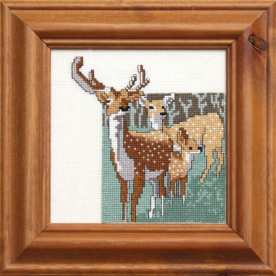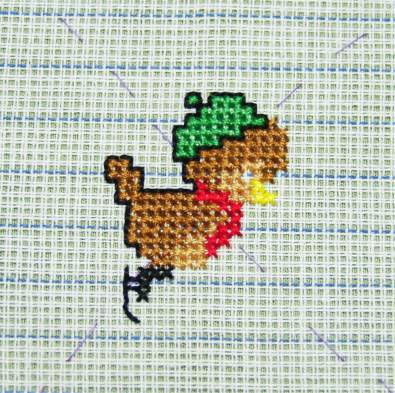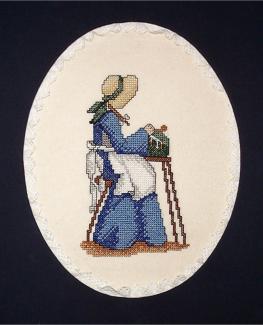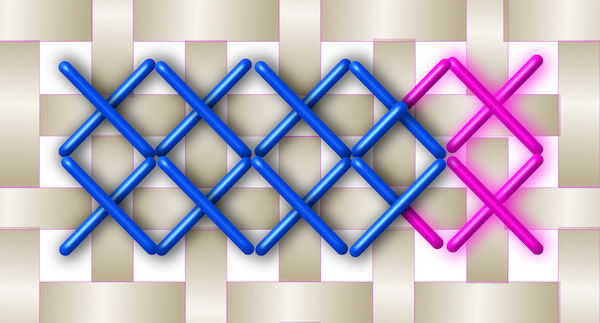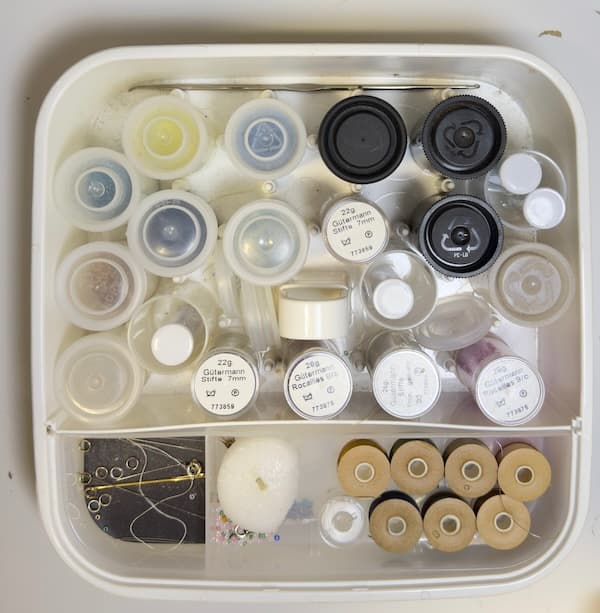- Home
- Assisi
Embroider History with a Free Assisi Pattern
With this free Assisi embroidery pattern in hand, let's take a journey through the rich history of this traditional Italian needlework, distinguished by its 'reverse' stitching technique.
Originating from the charming Italian village of Assisi, this craft has centuries-old roots and a deep connection to St. Francis, the patron saint of animals.
Its revival in the 19th century by local women led to its flourishing, helped by the establishment of a convent school in 1902.
Now it's your turn to experience the timeless allure of this remarkable embroidery, irrespective of your sewing skills.
 A bronze statue of St Francis in the main Basilica of Assisi. He is depicted as a soldier, realizing his destiny lay in more peaceful ways. - Photo by Cath Andrews
A bronze statue of St Francis in the main Basilica of Assisi. He is depicted as a soldier, realizing his destiny lay in more peaceful ways. - Photo by Cath AndrewsUnderstanding Assisi Embroidery
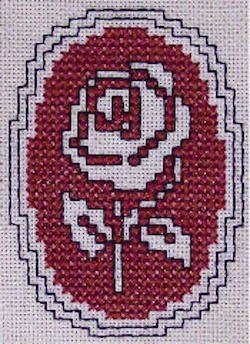
In Assisi embroidery, rather than filling in the design, you embroider the background, leaving the design itself blank.
While traditionally rendered in red or blue with black outlines, the 19th century saw the introduction of other colours such as green or gold.
Often the outlining used double running stitch or backstitch and the solid stitching was generally completed in a form of cross stitch, such as the following varieties...
- Long armed cross stitch
- Montenegrin
- Italian 2-sided cross stitch
Sometimes they used a four-sided stitch pulled work background to give a net like effect, in thread matching in colour to the fabric.
Subjects included mystical beasts, mermaids, nymphs, complex scenes of people and floral motifs, such as my rose design below.
If you like Assisi work you may be interested in checking out my needle-case designs where I blended the idea of assisi work with blackwork and came up with three animal design initially as a magazine commission.
Materials Needed for the Free Pattern

- 8" square of Aida 14 or 28 count evenweave fabric
- Embroidery floss (Red - DMC 498, and black - DMC 310)
- Tapestry needle size 24 or 26
- An embroidery hoop
Getting Started
Begin from the centre of your fabric to ensure the design fits. You can choose to stitch the outlines first for easier counting or start with the cross stitch for a neater finish.
How do I do Long Armed Cross Stitch?
Following the chart above, begin your stitching by creating a basic cross stitch. You'll see numbers 1 through 4 in the diagram below. These numbers guide you on where to insert and bring up your needle through the fabric, creating the first cross stitch in a sequence.
After your initial cross stitch, you'll move on to creating longer stitches. The diagram (below) will show you how to do this, starting at the point marked 5. Pay attention to the length and direction indicated.
It's important to ensure that the shorter arm of your stitches always crosses over in the same direction. This consistency is key to achieving a neat appearance.
As you progress, you'll repeat the sequence of stitches numbered 7 to 8 and then 9 to 10. When you reach the outside edge of the work finish each row with a normal cross stitch (marked in a darker blue in the diagram).
By following these steps, you'll be able to work on your free Assisi pattern effectively, ensuring that your stitches are consistent and your pattern comes out beautifully.
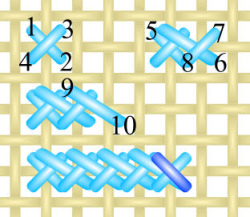
Where can I find more information?
If you are interested in exploring this technique further, a classic book on the subject is Assisi Embroideries by Therese de Dillmont, copies of which are sometimes available from Amazon.
Another rare but wonderful book is Assisi Work & Italian Hemstitching by Camela Testa, which was written about 1927.
A more modern book (1979) is Assisi Embroidery: Technique and 42 Charted Designs from the Dover Needlework Series. This is often available, secondhand, from Amazon.
I'll leave you with more photographs of the village of Assisi, taken by my friend Cath Andrews. Thank you for allowing me to share your pictures, Cath.
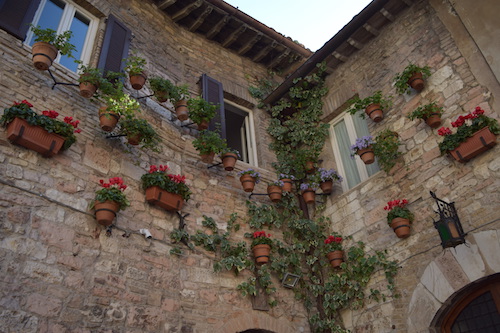
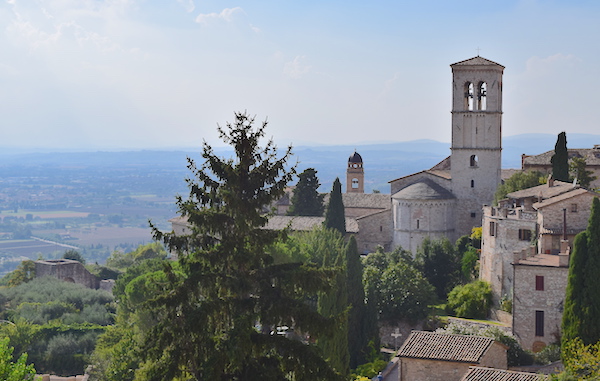
You will find more free patterns here. Enjoy!
What did you think of this page?
Did it give you all you needed or did anything else spring to mind? If there was something missing give me a shout – or let me know if this page proved helpful (do let me know which page you are commenting on).
Would you like a direct reply? Just pop your email address below, and I'll be in touch.
Stay connected between projects
If you’d like occasional updates from my embroidery room, including new patterns, gentle tips, and little things I think you might enjoy, you’re warmly invited to join the Stitchin’ Times newsletter.
No pressure. Just a friendly note now and then to keep you inspired.




